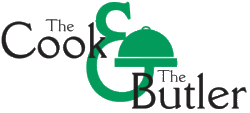
Tel: 020 7620 1818 email: cookandbutler@btconnect.com
The Worshipful Company of Gunmakers
www.gunmakers.org
Masters & Clerks Luncheon
March 2017, The Proof House, London
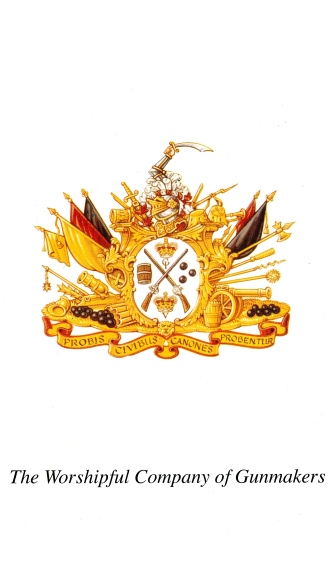
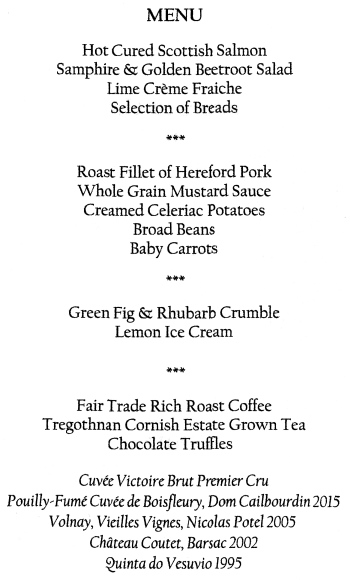

Livery Lunch
Commemorating the 350th anniversary of the Great Fire of London
September 2016, Cutlers' Hall
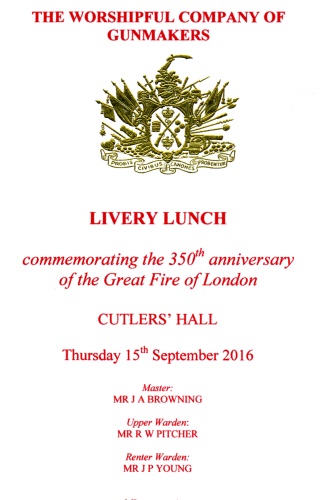
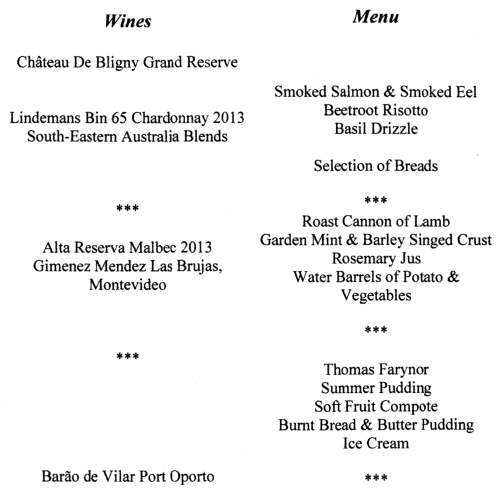
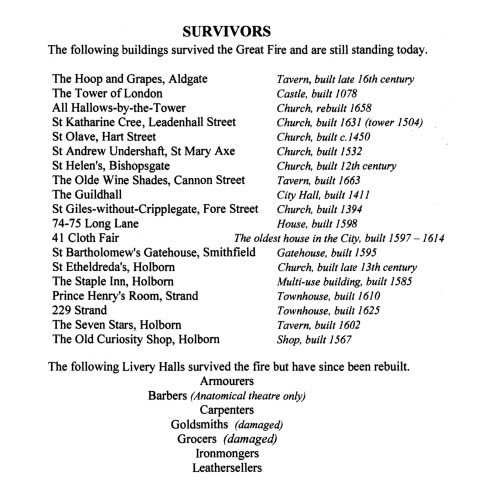
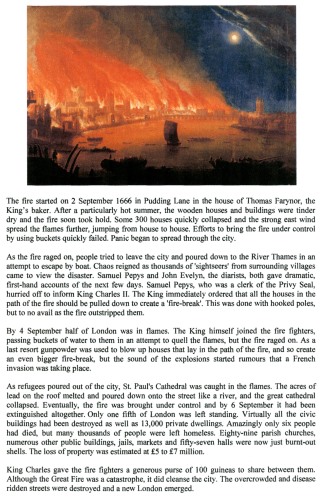

The fire started on 2 September 1666 in Pudding Lane in
the house of Thomas Farynor, the King's baker. After a particularly hot
summer, the wooden houses and buildings were tinder dry and the fire soon
took hold. Some 300 houses quickly collapsed and the strong east wind spread
the flames further, jumping from house to house. Efforts to bring the fire
under control by using buckets quickly failed. Panic began to spread through
the city.
As the fire raged on, people tried to leave the city and poured
down to the River Thames in an attempt to escape by boat. Chaos reigned as
thousands of 'sightseers' from surrounding villages came to view the
disaster. Samuel Pepys and John Evelyn, the diarists, both gave dramatic,
first-hand accounts of the next few days. Samuel Pepys, who was a clerk of
the Privy Seal, hurried off to inform King Charles ll. The King immediately
ordered that all the houses in the path of the fire should be pulled down to
create a 'fire-break'. This was done with hooked poles, but to no avail as
the fire outstripped them.
By 4 September half of London was in flames. The
King himself joined the fire fighters, passing buckets of water to them in
an attempt to quell the flames, but the fire raged on. As a last resort
gunpowder was used to blow up houses that lay in the path of the fire, and
so create an even bigger fire-break, but the sound of the explosions started rumours that a French invasion was taking place.
As refugees poured out of
the city, St Paul's Cathedral was caught in the flames. The acres of lead
on the roof melted and poured down onto the street like a river, and the
great cathedral collapsed. Eventually, the fire was brought under control
and by 6 September it had been extinguished altogether. Only one fifth of
London was left standing. Virtually all the civic buildings had been
destroyed as well as 13,000 private dwellings. Amazingly only six people had
died, but many thousands of people were left homeless. Eighty-nine parish
churches, numerous other public buildings, jails, markets and fifty-seven
halls were now just burnt-out shells. The loss of property was estimated at
£5 to £7 million.
King Charles gave the fire fighters a generous purse of
100 guineas to share between them. Although the Great Fire was a
catastrophe, it did cleanse the city. The overcrowded and disease ridden
streets were destroyed and a new London emerged.

Summer Banquet
June 2016, Stationers' Hall, London
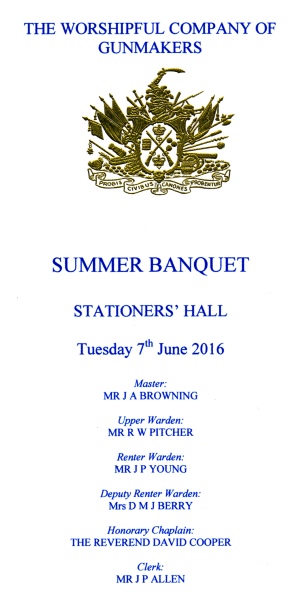
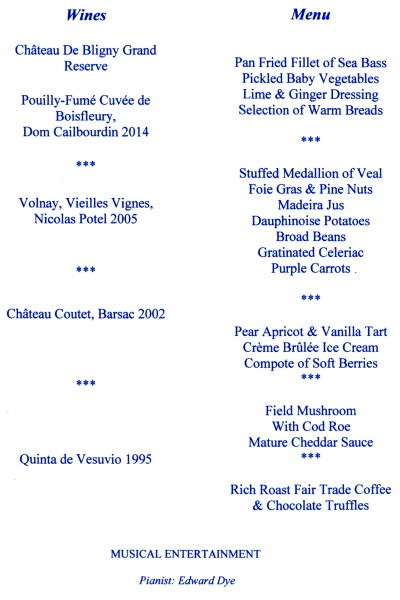

STATIONERS' HALL
The Company has occupied halls on three sites in the
course of its History. In 1606 it moved to its present location when it
purchased Abergavenny House from the widow of the Earl of Pembroke, and in
1611 it acquired the freehold. It was burnt down in the Great Fire of London
of 1666 and replaced by the present hall on the same site between 1670 and
1673. The beautiful wooden screen on the south side is the work of Henry
Ford who also made the tables still in use. The wainscoting was finished two
years later by Stephen Colledge, known as the Protestant joiner on account
of an anti-royalist pamphlet for which he was hanged at Oxford in 1681. The
banners are of masters who have served the office of Lord Mayor.
In 1800 Robert Mylne, a Scottish surveyor, renovated the hall and refaced
the exterior in Portland stone in the fashionable neo-classical style, A
painted glass window, donated by Alderman Cadell, with the arms of the
Company and the City, was inserted in the north wall in 1801. In 1894 this
was replaced by the present window, the gift of Joshua Butterworth, law
publisher and Master of the Company. It purports to depict Caxton showing
the first fruits of his press to Edward IV and his Queen and is a companion
to the windows in the west wall of Caxton, Shakespeare, Tyndale, St Cecilia
and Cranmer which were installed in the 1880s.

Masters & Clerks Luncheon
October 2015, The Proof House, London
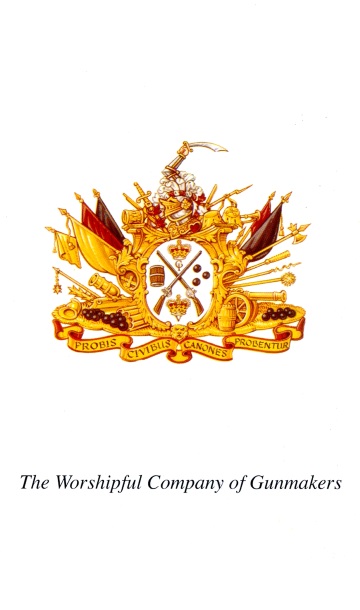
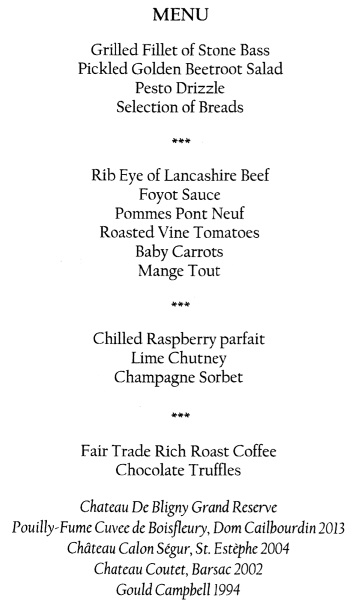
The Proof House on Commercial Road in London
has been the home of the Gunmakers Company for over 300 years
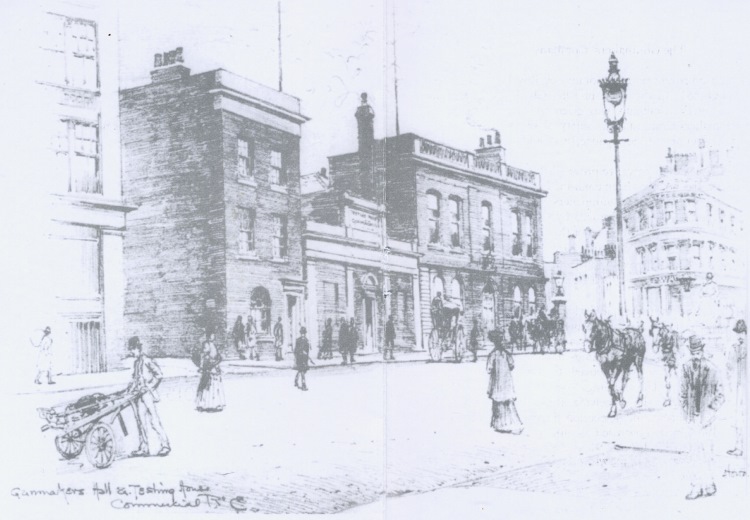

Waterloo Livery Lunch
June 2015, Cutlers' Hall, London
Waterloo for The Gunmakers Company - Napoleon and the Duke deliver the Beef Wellington
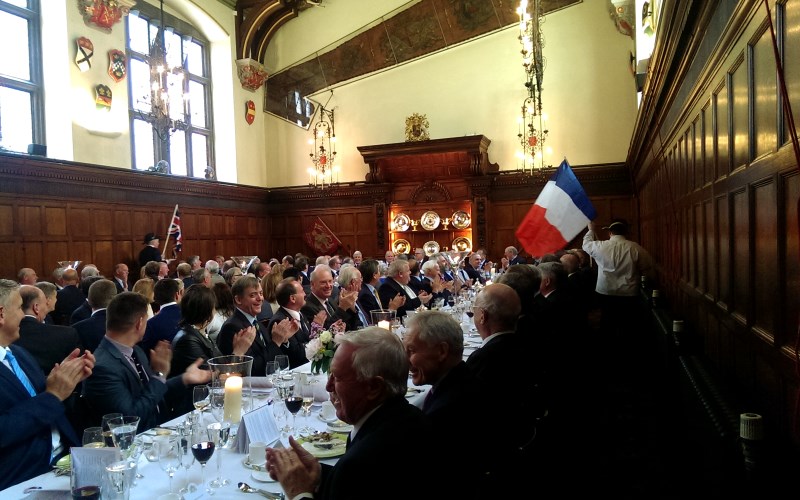
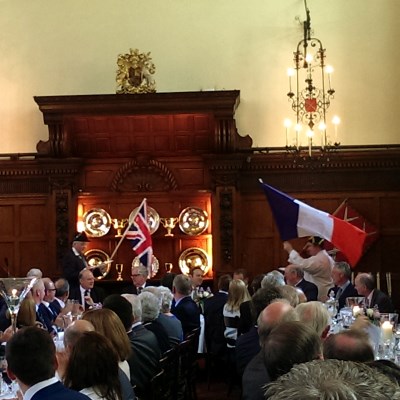
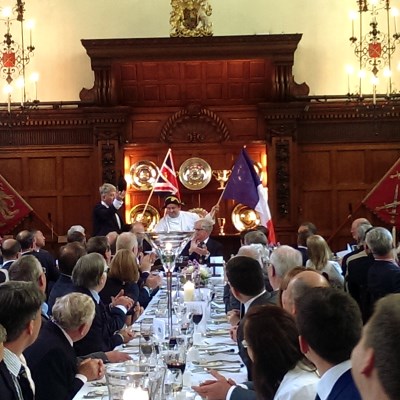
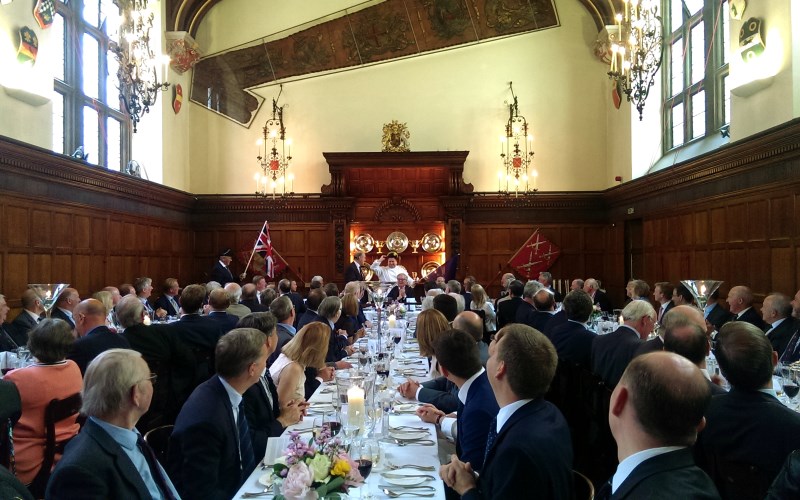

Summer Banquet
July 2014, Cutlers' Hall, London
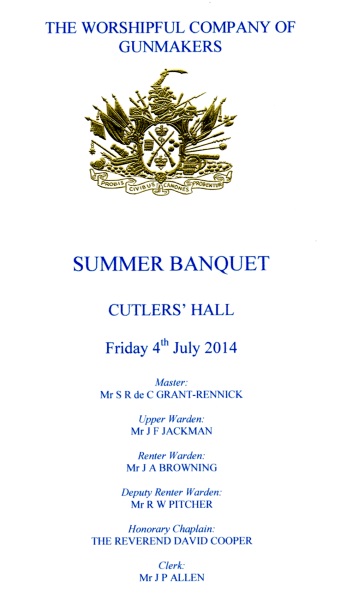
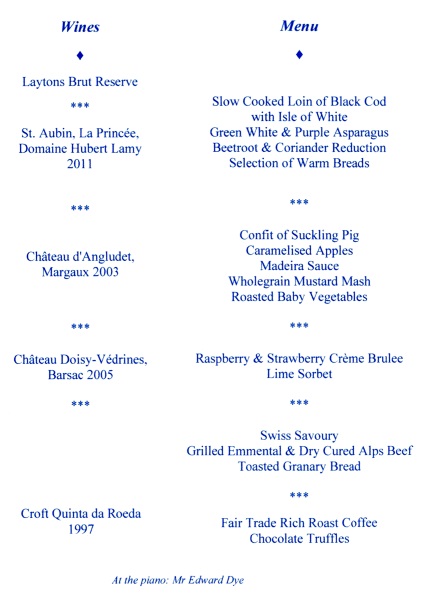

Nomination Dinner
November 2013, Carpenters’ Hall, London
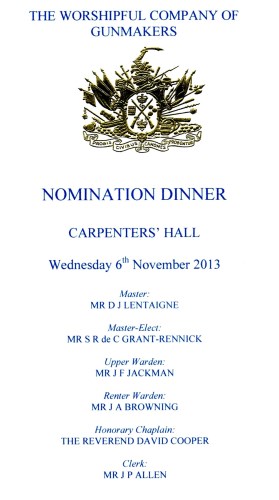
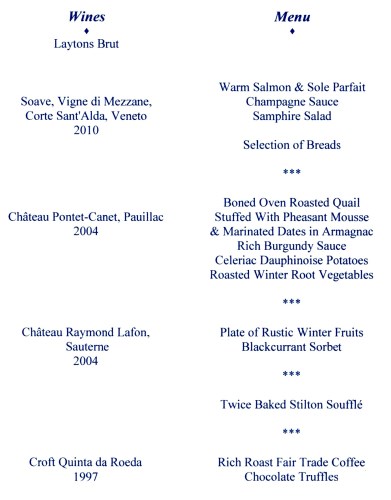

Lord Mayor's visit to the Proof
House
June 2013
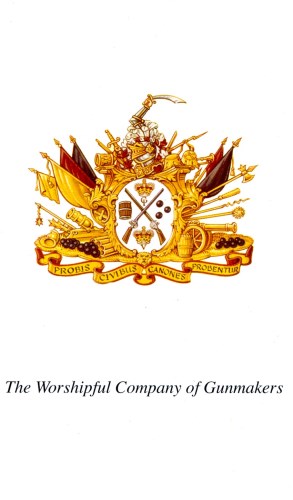
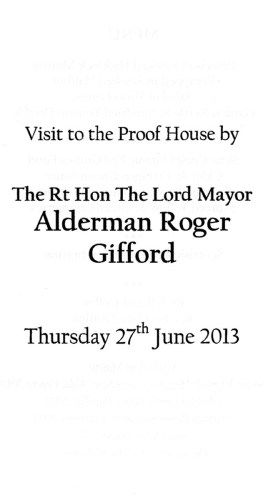
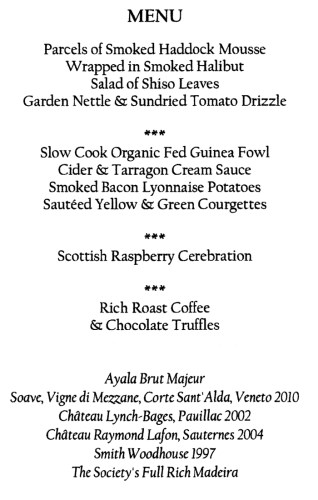

Midsummer Banquet
June 2013, Stationers' Hall, London
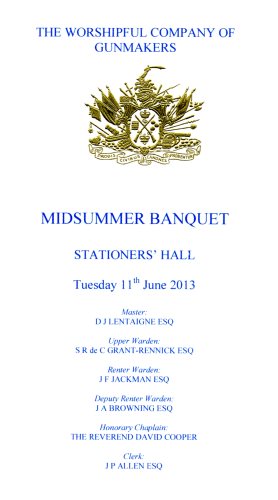
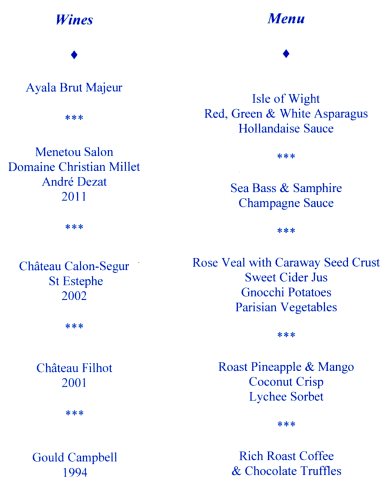

Court Dinner
April 2012, Armourers' Hall, London
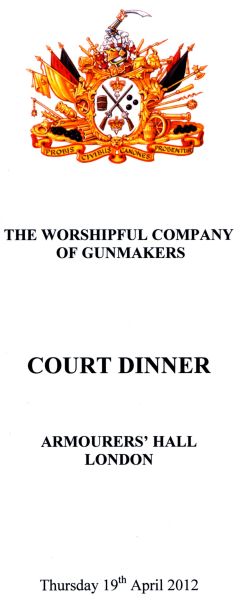
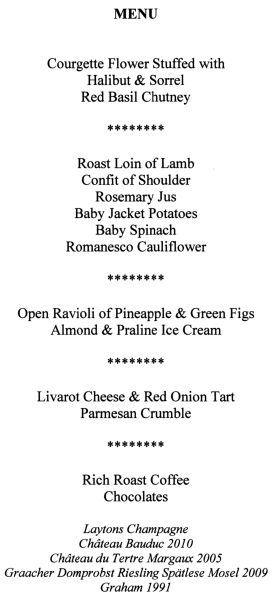

Nomination Dinner
November 2011, Stationers’ Hall, London
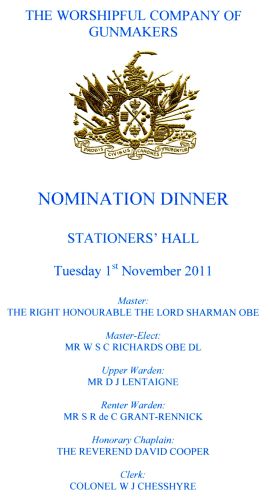
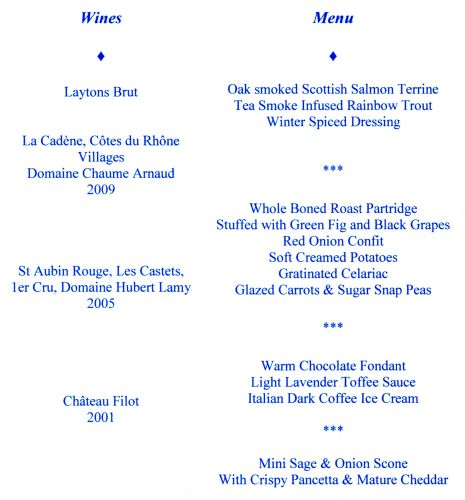

Midsummer Banquet
June 2010, Glaziers'/Launderers' Hall, London
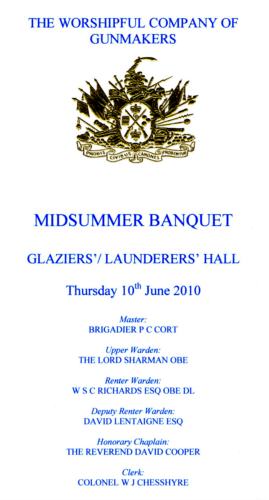


Nomination
Dinner
November 2009, Stationers' Hall, London

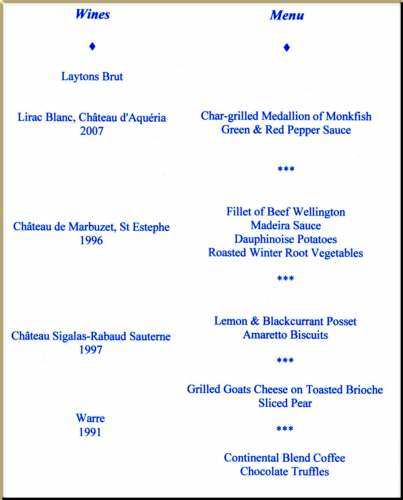

THE GUNMAKERS’ COMPANY
The Company was incorporated by Royal Charter on 14 March 1637 in the reign of King Charles I. Under the Charter the Company was given
control over both the gunmakers’ craft, and the safety of small arms,
through powers of search, view, gauge, proof and marking.
The Company’s power to prove small arms has continued to this day, and has
been confirmed in various Gun Barrel Proof Acts. Thus the Gunmakers Mark,
the letters ‘GP crowned’, originally approved by Charter, is still in use
today. The Company is one of the few in the City which still carries on the
purpose for which it was founded. Since 1988, the Company has also had
responsibility for certifying deactivated firearms..
The Company is unique as a City Livery Company in always having been located
outside the City walls, due to the noise and risk originally perceived from
proof activity. The Company’s first buildings in 1637 were by Aldgate, and
then in 1675 it moved to the present site in Whitechapel. The buildings
comprise the Proof House built in 1757, the Receiving Room designed for the
efficient delivery and inspection of weapons and the Proof Master’s house
now used as offices, both built in 1826, and various workshops. Next door is
Gunmakers’ Hall, built in 1872, sold in 1927, but repurchased in 2007.
![]()